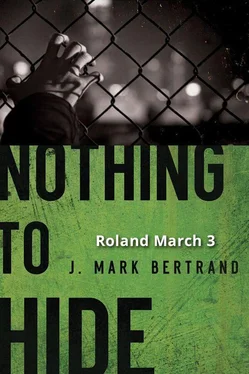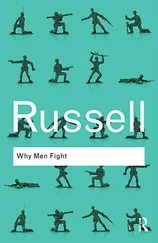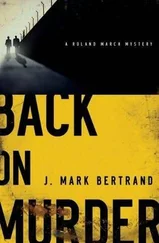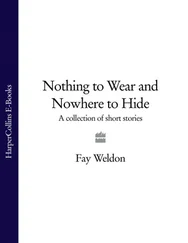J. Bertrand - Nothing to Hide
Здесь есть возможность читать онлайн «J. Bertrand - Nothing to Hide» весь текст электронной книги совершенно бесплатно (целиком полную версию без сокращений). В некоторых случаях можно слушать аудио, скачать через торрент в формате fb2 и присутствует краткое содержание. Год выпуска: 2012, ISBN: 2012, Издательство: Baker Publishing Group, Жанр: Полицейский детектив, на английском языке. Описание произведения, (предисловие) а так же отзывы посетителей доступны на портале библиотеки ЛибКат.
- Название:Nothing to Hide
- Автор:
- Издательство:Baker Publishing Group
- Жанр:
- Год:2012
- ISBN:9781441271006
- Рейтинг книги:3 / 5. Голосов: 1
-
Избранное:Добавить в избранное
- Отзывы:
-
Ваша оценка:
- 60
- 1
- 2
- 3
- 4
- 5
Nothing to Hide: краткое содержание, описание и аннотация
Предлагаем к чтению аннотацию, описание, краткое содержание или предисловие (зависит от того, что написал сам автор книги «Nothing to Hide»). Если вы не нашли необходимую информацию о книге — напишите в комментариях, мы постараемся отыскать её.
Nothing to Hide — читать онлайн бесплатно полную книгу (весь текст) целиком
Ниже представлен текст книги, разбитый по страницам. Система сохранения места последней прочитанной страницы, позволяет с удобством читать онлайн бесплатно книгу «Nothing to Hide», без необходимости каждый раз заново искать на чём Вы остановились. Поставьте закладку, и сможете в любой момент перейти на страницу, на которой закончили чтение.
Интервал:
Закладка:
“The Herald reporter had photos from the scene, the autopsy report, everything. Unfortunately some of the pages have been redacted. Somebody got a little heavy-handed with the permanent marker.”
“I see that.”
At the time, Macneil’s disappearance meant nothing to me. It only became relevant when I discovered that one of his cheated clients was Reg Keller, who at the time headed up an elite team inside the police department dubbed Comprehensive Risk Assessment, derisively renamed the Golden Parachute Brigade, since its sole reason for existence seemed to be to guarantee a bright future in security consulting once Keller made the long anticipated move into the private sector. To further that end, Keller had wooed some outside investors into creating a company to bid on port-related Homeland Security contracts, keeping his own involvement a secret until the groundwork was laid for his retirement. Chad Macneil, who helped put it all together, held the purse strings. When he disappeared, so did everything Keller had built.
The golden parachute was gone, leaving Keller on the hook with the investors. If he had been a businessman himself, Keller might have sought new investment or figured out some other way to keep the enterprise intact. Despite his rise through the ranks, Keller remained a street cop at heart. On his team he had officers with tactical ops experience, and he also had Tony Salazar, a former gang homicide unit detective who knew the city’s drug infrastructure better than most anyone. They started jacking drug dealers, amassing cash and product both, spreading the damage across different gangs and different parts of the city so that no one could pinpoint who was responsible. In the process they managed to put a small crimp in the supply lines and stir up rivalry and suspicion on the street. They could tell themselves they were helping the city and themselves at the same time.
It all came to an end at a house off of West Bellfort. An informant gave Salazar some bad intelligence, which led to a raid on a loan shark named Morales. There were no drugs, no stash of bills, but there was a teenaged girl strapped down on the bed. In the confusion of the gun battle, one of Keller’s men accidentally shot the girl. Investigating her murder fell to me, and the cop who shot her, consumed by guilt, wanted to confess to everything. He was a liability to the team, and Keller had gone too far to allow himself to be exposed now. So he put a bullet into one of his own men.
That didn’t stop me from finding out what had happened, but by the time I did, Keller had followed Chad Macneil’s example and disappeared. Cavallo, Wilcox, and I raided his apartment with a team of detectives. He was long gone.
It was a year later that police in Argentina responded to a call from a Buenos Aires luxury hotel, where they found a guest dead in the bathroom of his suite. He was kneeling on the tile floor, his body arched over the rim of the half-filled bathtub, his head submerged under the water. Although no one was ever charged, the rumor in Houston among people familiar with the case was that Reg Keller had caught up to him and taken revenge.
“There’s a lot of black ink here,” I say. “What are they trying to hide?”
“It’s not unusual to keep things from the press. We do it all the time.”
The tone of her voice tells me there’s more to the story than that.
“What are you not telling me?” I turn a few of the autopsy report pages toward me, scanning the text around the marked-out passages. “Help me out here.”
“Well,” she says, lifting her purse onto the table. “There was one thing that got my attention and that’s why I thought we should meet.” She unzips the purse, reaching in to produce a folded sheet. She opens it facedown on the table, smoothing the crease with her fingertip. “It’s hard to tell from the report what they’re hiding. But when I saw this photo, I think I figured it out.”
She flips the page and slides it across to me.
It’s another crime-scene photo, but unlike the others in which Chad Macneil’s nude body is photographed from the rear, with the head and arms disappearing over the rim of the tub, this one was taken from above so that the entire corpse is visible. The cloudy bathwater, which obscures the body in other shots, has been drained for this photograph. Only the back of his head is visible, the hair damp. The outstretched arms, bent at each elbow, intersect at the wrists, which would place his hands about six to eight inches above his head.
The hands are not visible, however. Around each, someone has drawn a square in black marker and then heavily shaded in the boxes.
“They’re hiding the hands,” I say.
“And why would they do that? Maybe something was done to them, the same thing that was done to Brandon Ford-or whatever the John Doe’s name really is. They could have been skinned.”
“De-gloved.”
“Which would suggest that the two homicides have something in common. Like maybe they were done by the same person.”
If she’s right, if the blacked-out hands in the photo were mutilated, the skin sliced away from the flesh, then the murder in Buenos Aires and the body found in Houston the next year could be related. The work of the same killer. Dr. Bridger needs to see this. He can tell us if what we’re guessing makes sense.
“Theresa. .” My throat tightens. “People say Reg Keller killed Macneil.”
She looks at me, one eyebrow arched, saying nothing.
She doesn’t have to.
CHAPTER 22
“And what exactly do you expect me to do with this?” Bridger asks. He peers at me across the top of his reading glasses, the faxed pages in his hand, with an expression of amused incredulity. “For one thing, I can barely read them. And for another, so much of it has been crossed out.”
“We were kind of hoping. .” Cavallo lets her voice trail off suggestively.
“Hoping what? That I could guess what’s underneath the black ink?” He tosses the stack onto the desk in front of him, crosses his leg, and smiles. “Your faith in me is touching, but a little misplaced. As a great man once said, ‘I’m a doctor, Jim, not a miracle worker.’”
“Could have fooled me,” I say.
“Flattery? You must be desperate.”
I know him well enough to realize that this resistance is a mask. The photo of Chad Macneil with his hands blacked out intrigued the medical examiner as much as it did me. His eyes widened the moment he saw it, and he didn’t need me or Cavallo to suggest a motive for the redaction. The same thought popped into his head as mine. But Bridger’s opinions are never offered without qualification, especially not when I’m the one asking. I come to him for too many favors, as he’s always reminding me. When he does speculate, though, you can usually take what he says to the bank.
The reason I first introduced my sister-in-law Ann to Dr. Alan Bridger was because, whenever I tried to explain to her how airtight the forensic evidence was against the convicted felon whose innocence she’d taken up as a cause célèbre , she naturally assumed that as a policeman I simply couldn’t admit the truth. When Bridger speaks, however, he has a way of channeling the voice of objective science circa 1950. Everything he says sounds right, which is why he’s a favored witness for the prosecution, and why from the start he drove Ann crazy, leading to many passionate and protracted disagreements.
I suppose the good doctor was accustomed to people deferring to his judgment. He enjoyed their little debates so much that he started coming over regularly for dinner. Eventually I suggested that the two of them could argue without Charlotte and me having to host. Before long, they were dating, and then Bridger surprised everyone (Ann included) by proposing marriage. The funny thing is, once they tied the knot, the debates pretty much ended. They can be very serene in each other’s presence.
Читать дальшеИнтервал:
Закладка:
Похожие книги на «Nothing to Hide»
Представляем Вашему вниманию похожие книги на «Nothing to Hide» списком для выбора. Мы отобрали схожую по названию и смыслу литературу в надежде предоставить читателям больше вариантов отыскать новые, интересные, ещё непрочитанные произведения.
Обсуждение, отзывы о книге «Nothing to Hide» и просто собственные мнения читателей. Оставьте ваши комментарии, напишите, что Вы думаете о произведении, его смысле или главных героях. Укажите что конкретно понравилось, а что нет, и почему Вы так считаете.












